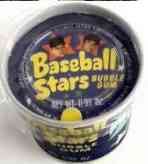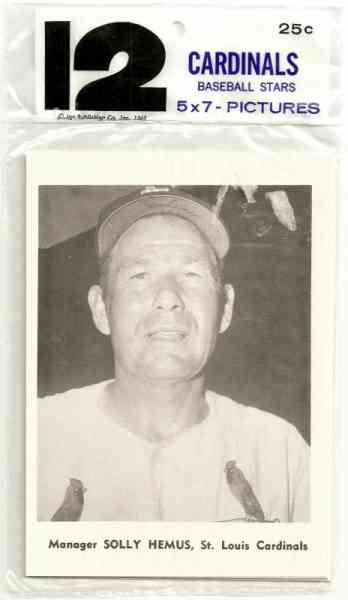Below are short bits & pieces on sportscard & baseball trading card collecting.
Please wander around the website for more info, prices, values & images
on vintage baseball, football, basketball, hockey, sport and non-sports cards.

1969 Topps Team Posters
Checklist & Values
The 1969 Topps Team Posters set was made up of 24 large
11 1/4" x 19 3/4" colorful posters, 1 for each team.
The posters, the largest printed item by Topps to date,
were very colorful picturing 9 or 10 players with their facsimile autographs.
The Posters were sold one per pack at .10 cents each.
Because they were folded many times and usually placed on walls
with tape or pins, high grade posters are very scarce.
Click for complete
1969 Topps Baseball Team Posters checklist, values and prices.
Note: You may be on that page right now.
|

1971 Kellogg's
1971, Kellogg's second and by far scarcest and most valuable set,
contained 75 different players on 2 ¼” by 3 ½” cards.
The cards were plastic coated giving them a 3-D look !!!
The plastic coating also made high grade cards nearly impossible find.
Over time and the elements, most cards would curl making light and heavy
cracks very common.
As opposed to Kellogg's other issues which were available from the company as complete sets,
1971 Kellogg's cards were ONLY available one in each specially marked box of Kellogg's cereal.
The only way to complete your 1971 Kellogg's set was to pester mom to buy, buy, buy more boxes of cereal.
In addition to the 75 different players, numerous scarcer variations exist
with minor differences in the stats on back. In addition, all 75 cards and
some variations are found with 2 different forms of copyright on the back:
XOGRAPH ( 80 total cards)
@1970 XOGRAPH (121 total cards)
The numbers above may not be 100% accurate.
The "toughest" cards appear to be:
# 7 Alou (1970 Oakland NL)
# 28 Wright (Angles Crest Logo)
# 54 Johnson (Angles Crest Logo)
# 64 Fregosi (Angles Crest Logo)
# 70 Osteen (No Number on back)
# 2 Seaver (ERA 2.81)
# 41 Gaston (113 Runs)
# 65 Rose (RBI 485)
|

1970/1972/1973 Topps Candy Lids
Checklist & Values


Topps has tried many crazy products, called "test issues".
Mostly distributed in limited areas, test issues were scarce.
"Candy Lids" were little tubs of candy with player's photos on
bottom of a 1-7/8" lid. 10 cents/tub, 24 tubs/box.
Topps first Candy Lids in 1970 and they are very, very hard to
find. They had small photos of Tom Seaver, Carl Yastrzemski & Frank Howard.


 1970 Topps Candy Lids were called "Baseball Stars Bubble Gum",
had 24 players, the 1973 Topps Candy Lids had 55.
1970 Topps Candy Lids were called "Baseball Stars Bubble Gum",
had 24 players, the 1973 Topps Candy Lids had 55.
Topps planned 1972 Candy Lids but never released it, a few proofs do exist.
 Topps 1973 Pinups & Comics share many of the same photos.
Topps 1973 Pinups & Comics share many of the same photos.
Click for complete
1973 Topps Candy Lids Checklist/Prices
Note: You may be on that page now.
|

How long have sports cards been around ? (part 1)
The first baseball trading cards date back to 1869. For many years,
baseball cards were packaged in packs of tobacco as a way to increase sales
the same way that today prizes are packaged in boxes of cereal.
In the 1920's and 1930's, candy and gum companies started packaging baseball
cards in their products as well.
Baseball card production was virtually halted in the early 1940's due to paper
shortages created by World War II. The "Modern Era" of baseball cards began in
1948 when Bowman Gum Inc. offered one card and one piece of gum in a pack for a penny.
The first important football set was the Mayo set featuring college players
in 1984. Other than the 1935 National Chicle set no other key football set was
issued until 1948 when noth Bowman and Leaf produced sets.
© 1995-2019 "InterNet's Baseball Card Store" / Joseph Juhasz ... All Rights Reserved
|








